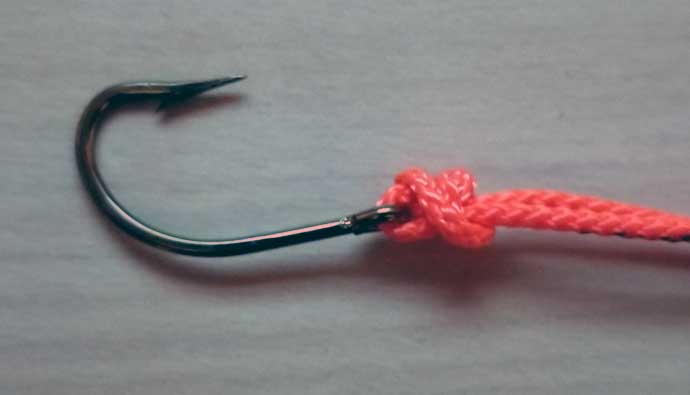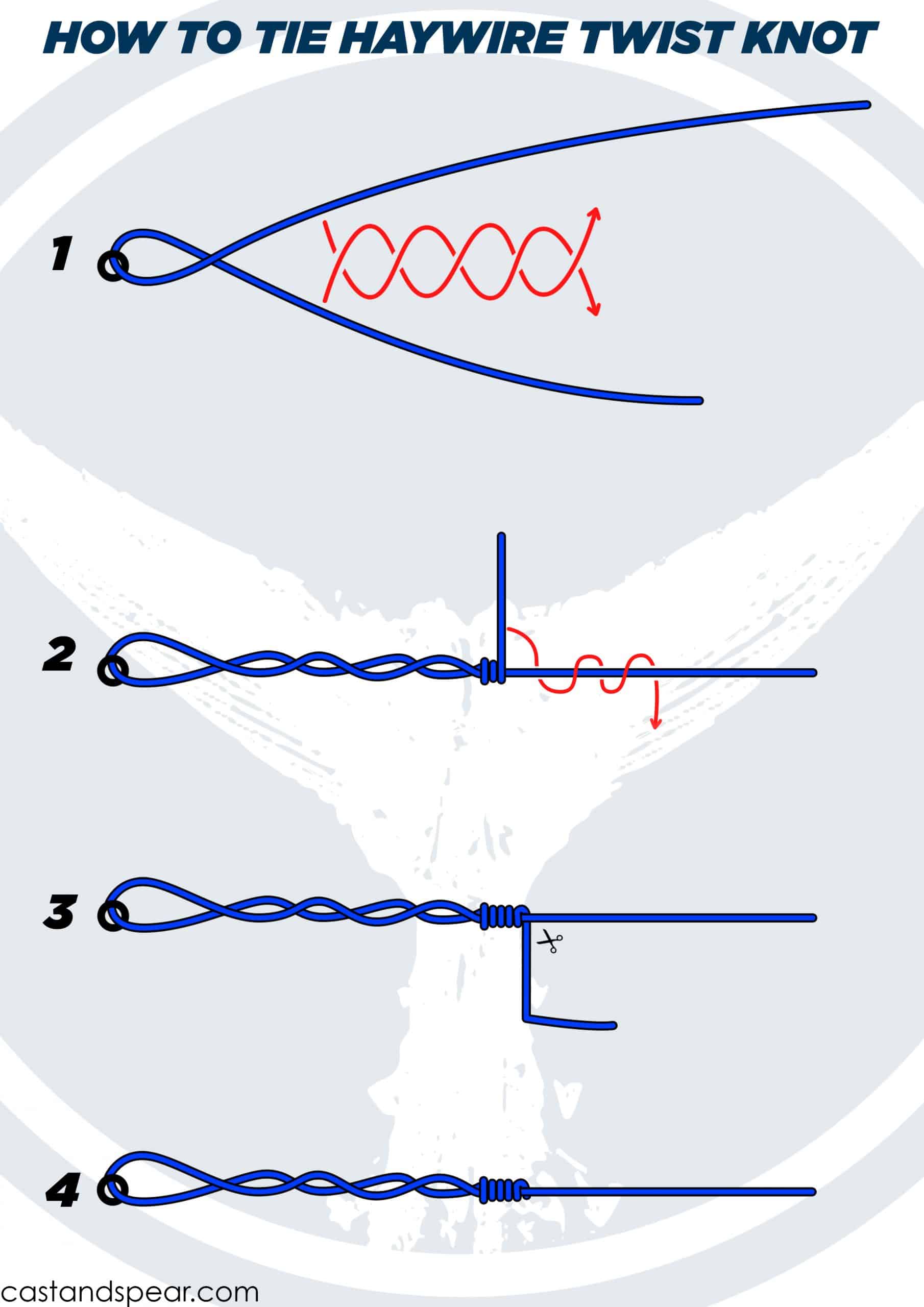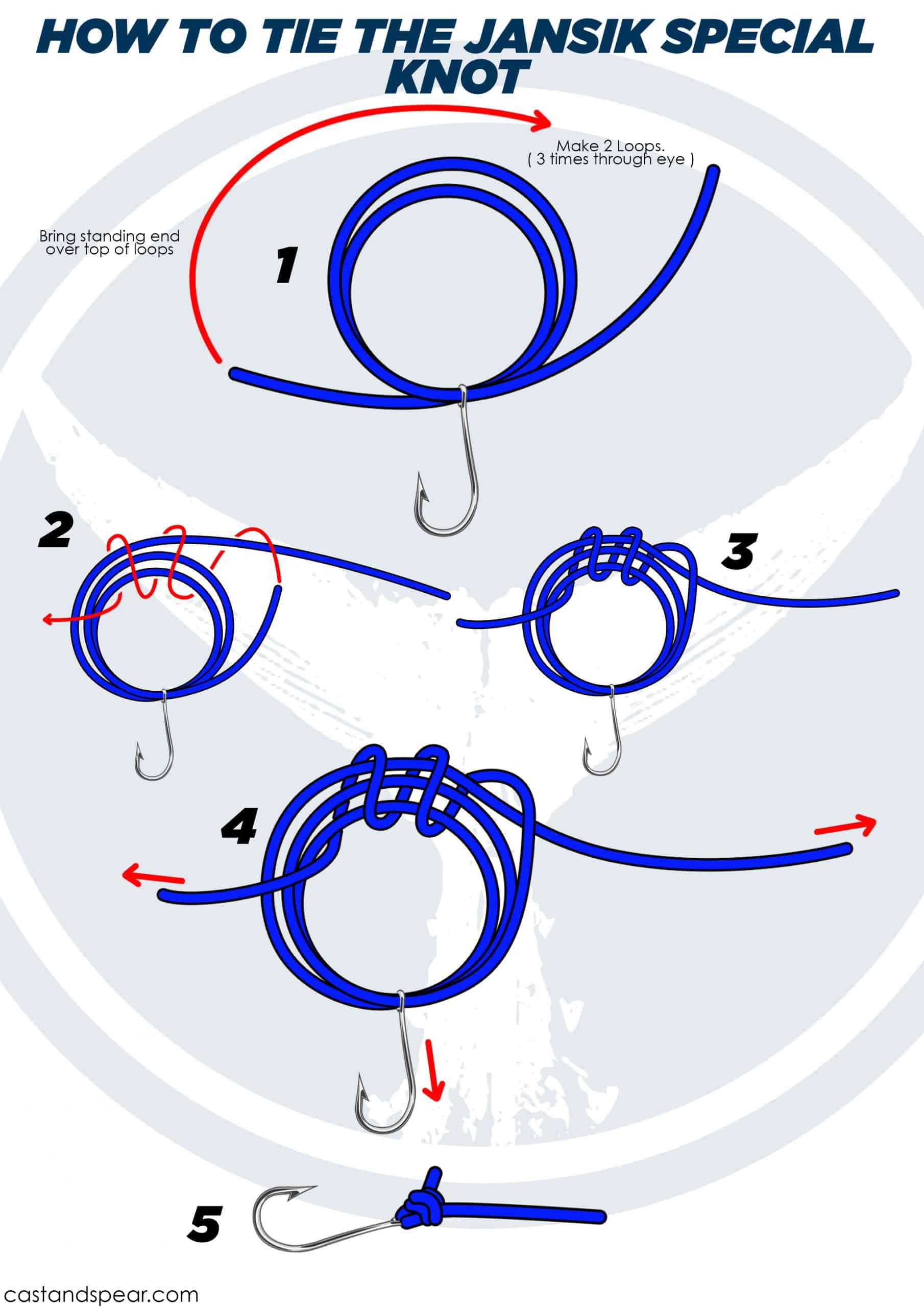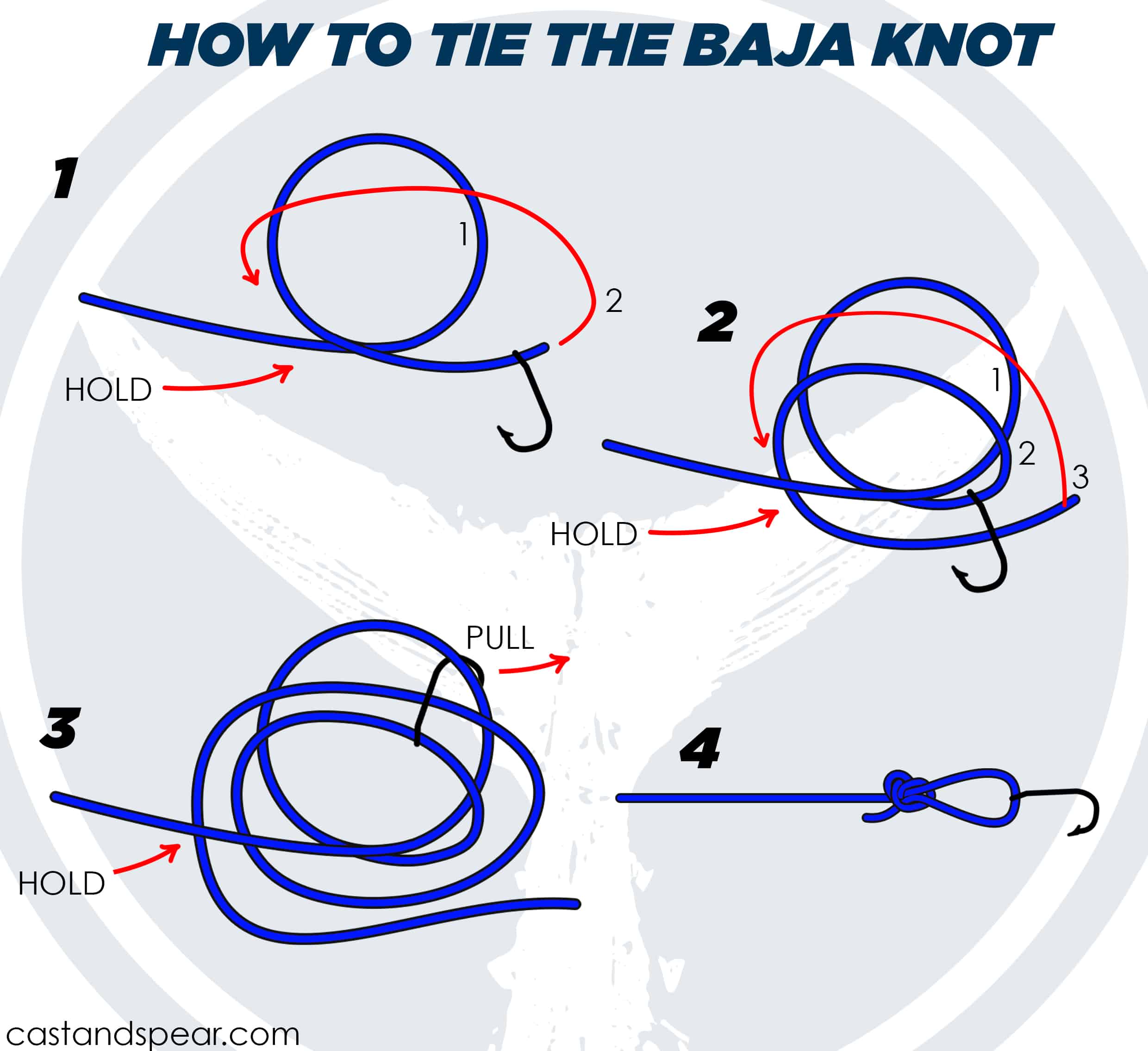Created by George Harvey, the incredibly skillful fly instructor, the Harvey dry fly knot (aka dry flies knot) is one of the best fishing knots for connecting flies with a tippet or hook down-turned eyes. This sturdy knot prevents the fly from tilting sideways.
Plus, you won’t have to pass an open loop over a fat fly pattern as you tie the Harvey dry fly knot.
Tying the Harvey Dry Fly Knot

Follow these steps to tie the Harvey dry fly knot:
Step 1
Place the tag end of the line through the hook eye.
Step 2
Pull the line through the eye of the hook till you have 4 inches to work with.
Step 3
Make two loops in the line large enough that you can grab them quickly.
Step 4
Slide the tag end of the line through the loops twice to make two wraps through the loops.
Step 5
Grab the bend of the hook in one hand and then pull on the standing line with the other hand to close the knot. If done right, the two loops you made should slide back and over the hook eye.
Step 6
Cut off the tag end, and you have a complete George Harvey dry fly knot.
That’s how you make a Harvey dry fly knot.

Fly Fishing Tips
- Keep a low profile while you are stalking fish in shallow water. Fish that are in deep water can spot you a mile away, but those that are near the shore cannot detect you so easily if you remain quiet.
- Strip set if you are fishing in saltwater. Make sure that the rod is pointed at the fly so that the hook can pierce the fish’s mouth.
- Wear polarising sunglasses out on the water. Besides protecting your eyes, these can remove glare and help you spot fish in the water quickly.
Advantages and Disadvantages
The Harvey dry fly knot is ideal for trout fishing, especially when it comes to fly tying and tippet tying. However, this knot can be challenging to tie for beginners at first. All you need is practice, though. The Harvey dry fly knot is one of the very few that can fit in a downturned hook eye without compromising rod performance. Just don’t pull or tamper with it, and you should be good.
Alternatives
- Turle knot – This knot makes a straight-line connection from a fly to a leader.
- Centauri knot – This knot works with any monofilament (irrespective of size) for connecting the terminal tackle. It does not distort the line like other knots.
Frequently Asked Questions
Q: What is the best knot for fly fishing?
A: The 100% Arbor knot is considered one of the best knots for this.
Q: What is the best dry fly knot?
A: The knot is considered to be the best in this regard compared to other knots.
Q: How do you tie an Orvis knot?
A: Feed the fishing line through the eye of the hook from below. Then wrap it behind the standing line before crossing it and bringing the end through the loop that is formed. Pass the tag end through the top of the loop from behind and repeat on the other side. Dampen the line and pull the tag end to close the knot. Trim the excess line and check the knot.
Q: How do you link or tie a fly rod on a hook?
A: The best way to do that is by tying a Clinch knot. To make one slip, the line through the eye of the hook and pull 5 inches of tag line through it. Pinch the tag line and run it between your forefinger and thumb. Then make a loop and twist it 5 to 7 times to wind the tag end around the running line. Then pass the tag end through the opening. You get above the hook eye before moistening the twisted line and pulling both the running line and tag end tight. Trim off the excess line.
Q: How do you tie a fly?
A: You will need to make a nail knot to tie a fly to a fishing line. Place a hollow tube or a nail against the end of a fly line and set the end section of the leader against it, leaving at least 10 inches for the knot. Then make 6 or 8 close wraps back around the line, leader, and the nail before passing the tag-end of the line through the tube or the gap that the nail leaves behind.
Then pull the tag end of the line to wrap up the coils and pull on the leader and tag end to set the knot. Trim the excess line straight.




 Facebook
Facebook YouTube
YouTube



